Like fondue or a 99 Flake, Singapore chilli crab is a dish whose pleasure lies as much in its theatre as in its flavour – if you can crack your way through a crab smothered in vivid, red sauce without making a happy mess, frankly, you’re probably doing it wrong. Created, it’s said, by Cher Yam Tian in the 1950s to please a (decidedly ungrateful-sounding) husband bored with steamed crab, it’s become a delicious, sauce-splattered icon of a city that’s not afraid to get its hands, face and shirt dirty in pursuit of a good meal.
Chilli crab has come a long way since the days when Tian sold it from a pushcart in Kallang without a permit – you can even get chilli crab ice-cream at one of Singapore’s Michelin-starred restaurants – yet whether you eat it from a starched tablecloth or a plastic table at a humid tze char, it’s always worth the dry-cleaning bill. But with international travel still a distant dream, is it possible to recreate the magic at home?
The crab

This is an easy one – mud crabs, as used in Singapore, are thin on the ground/sea floor in my part of the world, so I used brown crabs, though you could substitute soft-shell, spider or just about any other edible variety, or indeed use the sauce for lobster, prawns or whatever else takes your fancy (in which case, you will, of course, need to alter the preparation and cooking instructions accordingly.)
Food writer Sylvia Tan cooks her crabs whole in boiling water, before dividing them up and tossing them in the sauce. This does make the process less fiddly, because it’s easier to prepare the sauce without huge pieces of crustacean getting in the way. But it inevitably means that the crab cannot infuse the sauce with its flavour, and that the sauce has less chance to creep into every crevice of the crab, so I wouldn’t counsel it. I would, however, recommend saving yourself a bit of work by asking the fishmonger to dispatch and divide the crab up for you – it’s not hard work (there are many helpful videos online), but to do it humanely does require know-how and a firm hand with a cleaver.
Australian-Malaysian food writer (and MasterChef Australia winner) Adam Liaw stirs the gooey innards of the crab into the sauce to enrich it – and, if you’re averse to getting into the shell with your tongue, this is the second-best option. Treat your crab with respect; don’t waste a thing.
The paste
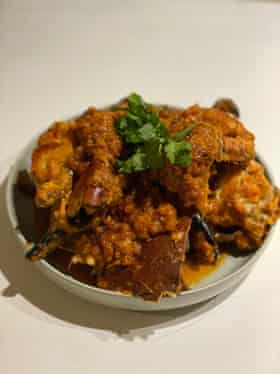
Most chilli crab recipes start with a paste, fried until aromatic, to which the crab is then added, along with the liquid elements of the sauce. An onion of some variety is usual – whether red (Tan), brown (Liaw), or shallots (chefs Eric Teo and Salil Mehta and Peranakan food writer Mrs Leong Yee Soo), as are garlic and chillies. The sweetness of shallots works well with the ginger also used by many recipes, though red onion makes a decent substitute; Teong also sticks in large amounts of peppery galangal root, which is pleasant, but not always easy to track down except at south-east Asian specialist food stores.
Garlic adds a more savoury note, enhanced by belacan, or fermented shrimp paste, in Liaw and Mehta’s recipes, and fermented soy bean paste in Tan and Cher’s, whose recipe is now in the guardianship of Roland Restaurant, the restaurant set up by her son, and now managed by her grandson. Though not all recipes call for them, I do think you need one or the other to complement the marine funkiness of the crab, or you risk straying into sweet-and-sour territory. Personally, I’m a belacan fan, but you may find soy bean paste easier to come by. (And if you can’t find either, add a dash of Thai fish sauce – it’s may not be what would be used in Singapore, but it is fairly easily found in British supermarkets, though not as easily as Jack Stein’s Marmite.)

Though chilli crab tends to be less spicy than the dish’s name implies, chilli’s fruity warmth plays a big part in the finished dish. Teo uses bird’s eye, Leong chilli sauce (which I interpret as sambal), Roland’s recipe, as interpreted by the Martha Stewart team, chilli paste and chilli garlic sauce, Liaw long red chillies, while Tan simply lists red chillies. Given the other ingredients involved will rob them of much of their nuance, it doesn’t matter too much what kind you use, as long as they’re red and have some heat to them; exactly how much depends on your taste, though I like the sweetness of the long red variety, when they’re available.
That classic Malaysian and Indonesian ingredient, the candlenut, so called because of its high oil content, pop up in Teo’s paste, which, given that it also contains 250ml oil, makes it extremely rich indeed. I rarely say no to nuts, but here their creaminess is, I concede, unnecessary; the crab has enough of that going on already.
Though a neutral oil seems to be the usual frying medium, Leong, author of 1988’s The Best of Singapore Cooking, whose recipe is kindly shared with me by a Twitter correspondent, cooks the paste in large amounts of lard, which gives her sauce an almost smoky, porky richness with which I’m very taken – though decent lard is almost as hard to come by in this country as mud crabs, so I’ve gone with the more conventional option in the recipe below.
The sauce
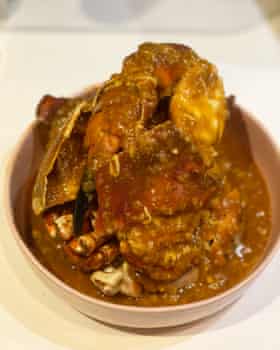
Chilli crab gets its vivid colour not from chillies, but from tomatoes; they play a part in all the recipes I try, from Tan’s fresh fruit, which make her sauce lighter and more acidic than the others, to the “tomato sauce” of the jammy Roland version, with Liaw’s passata falling somewhere in the middle. Leong’s dish, meanwhile, includes eight tablespoons of tomato ketchup, which, according to Roland Lim, was key to his mother’s original formula, though these days, in response to changing tastes, his restaurant has dialled back the ketchup sweetness in favour of more of a chilli kick.
Nevertheless, it would feel wrong to leave out ketchup altogether, even given the difficulty of finding the Maggi brand that Teo demands for his recipe and that is, at the time of writing, rarer than hen’s teeth, with new stocks possibly having been stuck somewhere just south of Suez. When I finally get hold of some, I find it’s slightly spicier and more savoury than the brands I’m used to, but what with all the other flavours involved here, it’s hard to pick out the difference in the finished dish.
As such, I’d suggest starting with the amount of sugar and vinegar (both of which tend to be used in recipes with less ketchup) below and adding more to taste if necessary at the end: the sauce should be sweet, tangy and mildly hot, rather than fiery, though you could add chilli sauce if you feel it needs it; and if you happen to have some sambal oelek lying around, even better.
Liaw and Tan season their chilli crab with soy sauce, which I like, because it helps to balance the sweetness of the ketchup, and the former dilutes the sauce with chicken or fish stock, rather than water, which, while it boosts the umami flavours, I think dilutes the flavour of the crab. If you’re really into umami, you could, like Leong, add a pinch of MSG instead, though the belacan should do the trick in that department.
The thickener
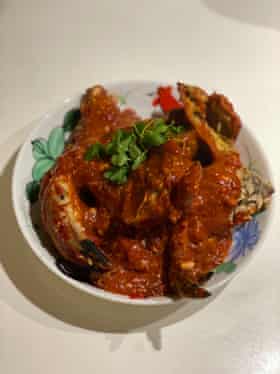
Only Tan opts for a more liquid sauce, with everyone else thickening it with either cornflour or (Cher Yam Tian’s preference, because “it’s better”) than tapioca starch, though the Stewart version of the Roland recipe contains so much of the stuff that it’s almost gelatinous. Whichever you use, make sure you don’t reduce it so far that it slides off the crab instead of into it. Beaten egg, a more recent development often credited to Hooi Kok Wah, one of the four “heavenly kings” of Chinese cooking in the city in the 1960s, is an optional extra, but does add a pleasing, silky richness while still letting the crab take centre stage. Liaw also stirs in chopped spring onions, which, like the more popular scattering of coriander, bring a welcome touch of freshness to this sticky, juicy, messy bowl of joy.
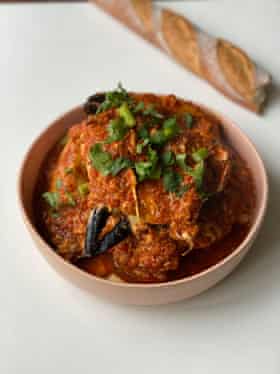
Serve with steamed or fried mantou buns (or, if you want to be faithful to the original, chunks of baguette), finger bowls and plenty of napkins.
Perfect Singapore chilli crab
Prep 15 min
Cook 10 min
Serves 1-2
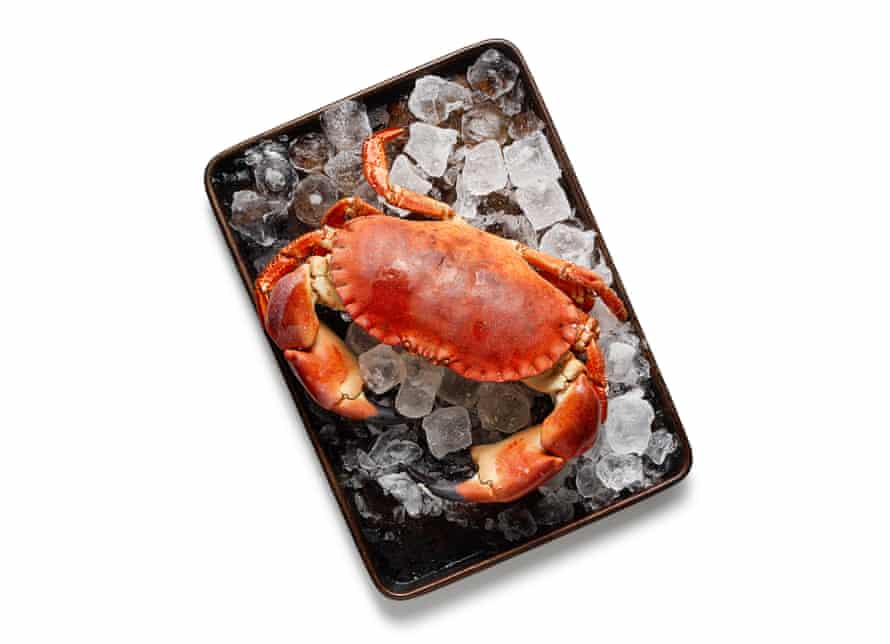
250g passata, or chopped tomatoes
1 tbsp white vinegar
1-2 tbsp sugar (depending on the sweetness of the ketchup)
2 tbsp tomato ketchup
1 tbsp light soy sauce
2 tbsp neutral oil
1-2 brown crabs, claws separated and cracked, body cut into four and cleaned
1 tsp cornflour, or potato or tapioca starch
1 egg, beaten (optional)
4 spring onions, trimmed and cut into roughly 3cm lengths (optional)
Fresh coriander, to serve (optional)
For the paste
5 round shallots, peeled and roughly chopped
6 garlic cloves, peeled and roughly chopped
50g ginger, peeled and roughly chopped
3-5 long red chillies, or 1 bird’s eye chilli, roughly chopped (pith and seeds removed if you prefer less heat)
1 tsp belacan (fermented shrimp paste), or brown bean paste
2 tbsp neutral oil
Put all the paste ingredients in a blender, blitz and set aside.
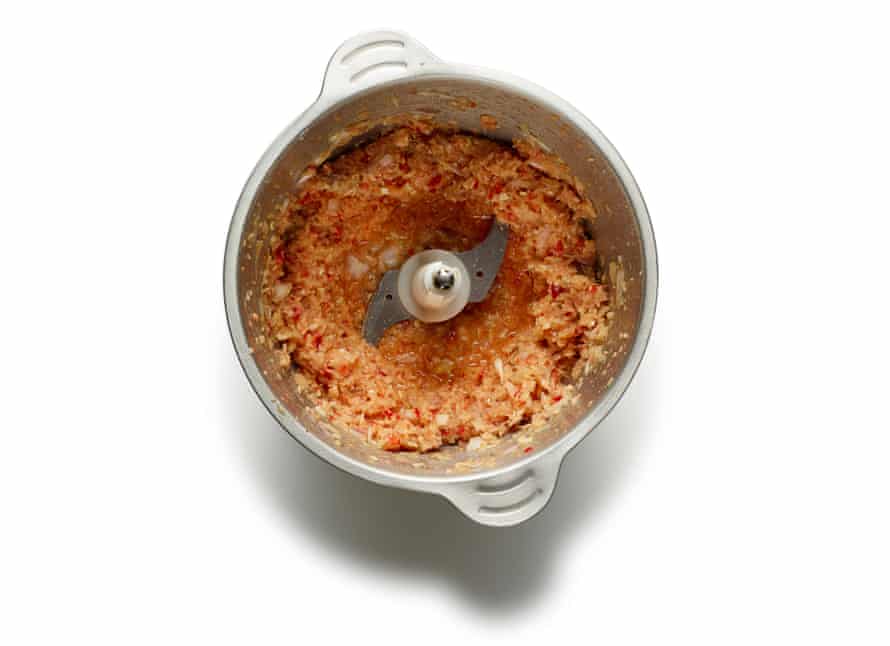
Put the tomatoes, vinegar, sugar, ketchup and soy sauce in a bowl or jug with 250ml water.
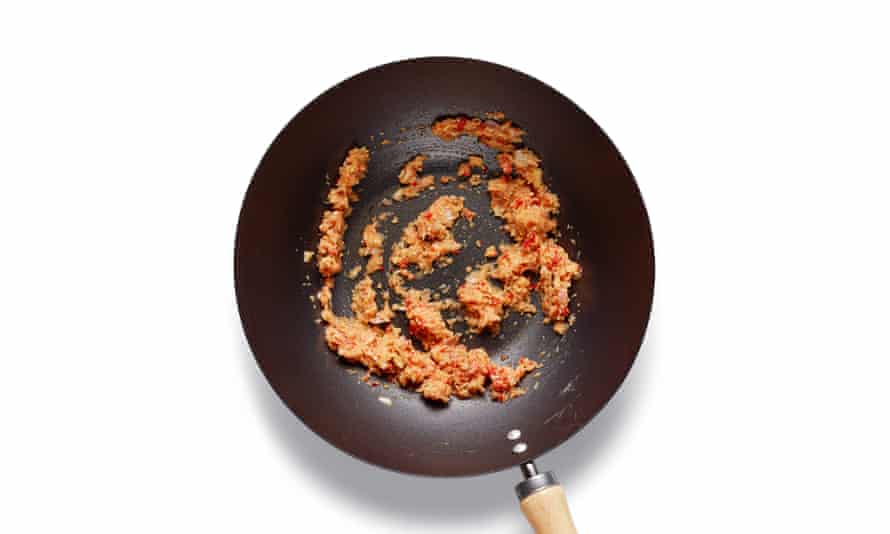
Heat the oil in a wok over a high heat, then stir-fry the paste until aromatic and the oil begins to separate.
Add the crab and stir-fry, tossing to coat, for a couple of minutes, then add the tomato mixture and stir.
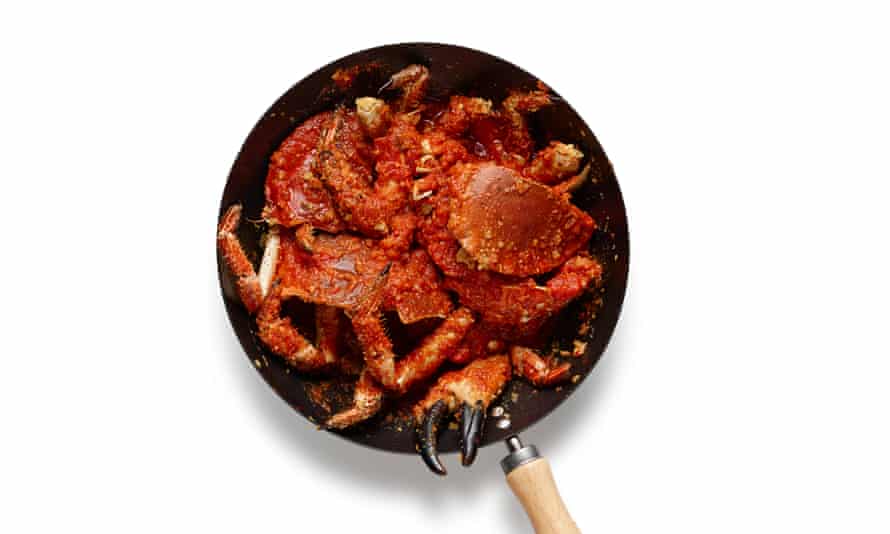
Bring to a simmer, then cover the wok (I use a large frying pan as a lid) and cook for five minutes, shaking the pan once or twice to help the crab cook evenly. Meanwhile, mix the cornflour with two tablespoons of cold water.
Use tongs to lift out the pieces of crab into a serving bowl, stir the cornflour paste into the sauce, followed by the beaten egg, leaving it to set slightly before mixing in.
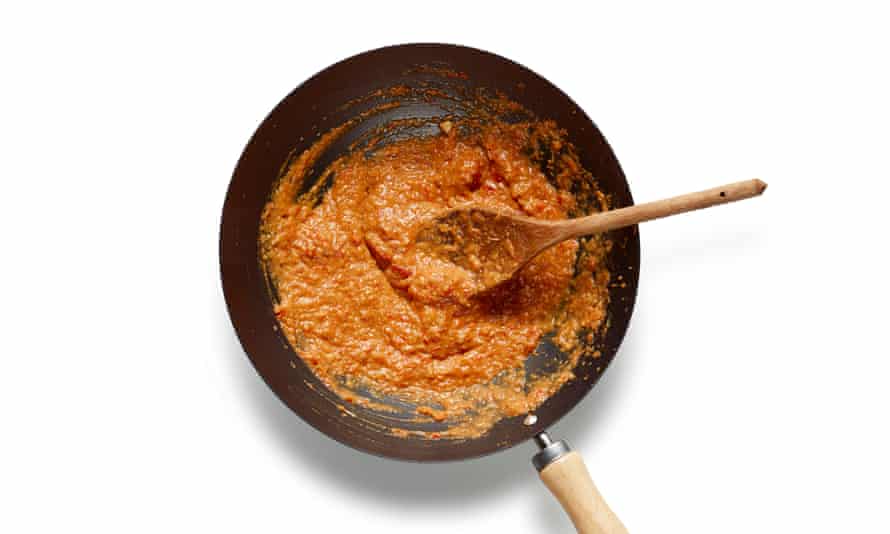
Taste the sauce, adjust the seasoning as necessary, then pour over the crab.

Serve topped with spring onion and coriander, if using.
Singapore chilli crab was recently voted the city’s third favourite dish after Hainanese chicken rice and laksa – where serves your preferred version, or are you more of a pepper crab fan … or would you go for something else entirely?
The Link LonkApril 28, 2021 at 06:00PM
https://ift.tt/3eGige2
How to cook the perfect Singapore chilli crab – recipe - The Guardian
https://ift.tt/2MkGRbk
Crab

No comments:
Post a Comment